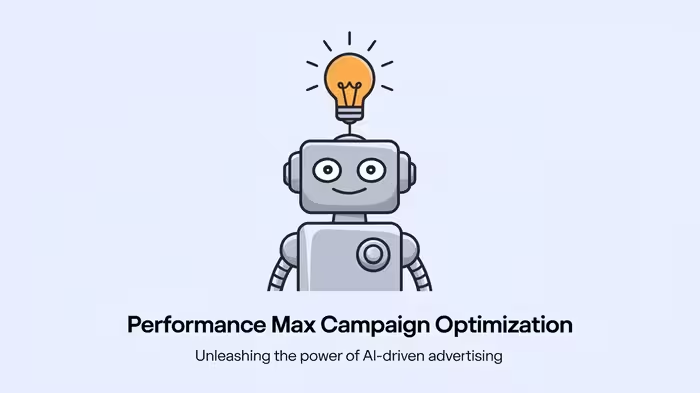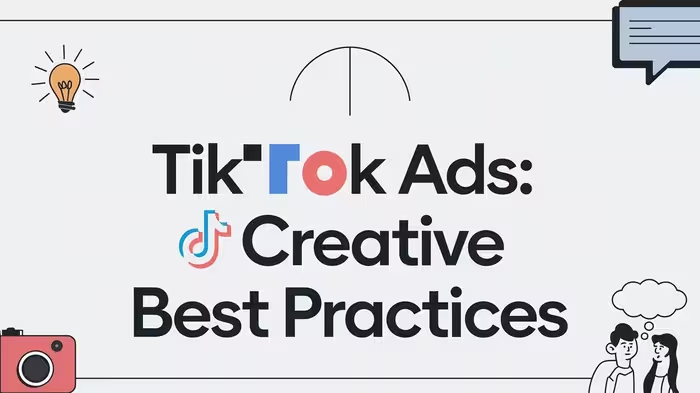In today’s digital landscape, advertisers face a growing challenge: how to effectively reach their target audience while respecting user privacy. As consumers become increasingly aware of data collection practices and demand greater control over their personal information, the advertising industry is undergoing a significant shift. Enter privacy-first advertising strategies – a new approach that promises to revolutionize the way brands connect with their customers.
In this comprehensive guide, we’ll explore the world of privacy-first advertising, its importance, and how businesses can implement these strategies to thrive in an era of heightened privacy concerns.
The Rise of Privacy Concerns in Digital Advertising
Remember the days when targeted ads seemed almost magical, showing you exactly what you wanted before you even knew you wanted it? While personalized advertising has been a boon for marketers, it has also raised serious privacy concerns among consumers.
High-profile data breaches, the Cambridge Analytica scandal, and the implementation of regulations like GDPR and CCPA have all contributed to a growing awareness of how personal data is collected, used, and sometimes misused in the digital advertising ecosystem.
As a result, we’ve seen a seismic shift in the advertising landscape. Tech giants like Apple and Google have introduced privacy-focused features that limit tracking capabilities, while consumers are increasingly using ad-blockers and opting out of data collection whenever possible. This new reality has forced advertisers to rethink their strategies and prioritize user privacy without sacrificing the effectiveness of their campaigns.
Understanding Privacy-First Advertising
Definition and Core Principles
Privacy-first advertising is an approach that puts user privacy at the forefront of marketing strategies. It’s about finding innovative ways to reach and engage audiences without relying on invasive data collection practices or compromising individual privacy rights. The core principles of privacy-first advertising include:
- Transparency: Being open and honest about data collection and usage practices.
- Consent: Obtaining explicit permission from users before collecting or using their data.
- Data Minimization: Collecting only the data that is absolutely necessary for the intended purpose.
- User Control: Giving individuals the power to manage their data and privacy preferences.
- Security: Implementing robust measures to protect collected data from breaches and unauthorized access.
Benefits for Consumers and Businesses
Adopting privacy-first advertising strategies offers numerous benefits for both consumers and businesses:
For consumers:
- Enhanced trust in brands and online experiences
- Greater control over personal data
- Reduced risk of data breaches and misuse
- More relevant and less intrusive advertising
For businesses:
- Improved brand reputation and customer loyalty
- Compliance with privacy regulations, reducing legal risks
- Potential for more meaningful customer relationships
- Opportunity to differentiate from competitors
By prioritizing privacy, businesses can build stronger, more authentic connections with their audience while navigating the complex landscape of data protection regulations.
Key Privacy-First Advertising Strategies
Now that we understand the importance of privacy-first advertising, let’s dive into some key strategies that businesses can implement to achieve their marketing goals while respecting user privacy.
First-Party Data Collection and Utilization
In a privacy-first world, first-party data becomes invaluable. This is information that users willingly share directly with your business, such as email addresses, purchase history, or preferences. Unlike third-party data, which is often collected without explicit user consent, first-party data is more reliable, accurate, and compliant with privacy regulations.
To leverage first-party data effectively:
- Develop engaging content and experiences that encourage users to share their information voluntarily
- Use progressive profiling to collect data gradually over time, rather than all at once
- Implement a robust Customer Data Platform (CDP) to centralize and analyze first-party data
- Create personalized experiences based on this data, always with user consent
Remember, the key is to provide value in exchange for data. Users are more likely to share information if they see a clear benefit, such as personalized recommendations or exclusive offers.
Contextual Advertising
Contextual advertising is making a comeback in the privacy-first era. Instead of relying on user data to serve ads, contextual advertising focuses on the content of the webpage or app where the ad appears. For example, a sports equipment ad might be shown on a fitness blog, regardless of the user’s browsing history.
To implement contextual advertising:
- Develop a deep understanding of your target audience and the types of content they consume
- Use advanced natural language processing and machine learning algorithms to analyze page content and match it with relevant ads
- Create diverse ad creatives that can work in various contextual settings
- Continuously test and refine your contextual targeting strategies
Contextual advertising not only respects user privacy but can also lead to higher engagement rates as ads are more likely to be relevant to the user’s current interests and mindset.
Federated Learning of Cohorts (FLoC)
Federated Learning of Cohorts (FLoC) is a privacy-preserving targeting method proposed by Google as part of its Privacy Sandbox initiative. FLoC aims to replace third-party cookies by grouping users with similar browsing behaviors into cohorts. Advertisers can then target these cohorts without accessing individual user data.
While FLoC has faced some criticism and is still evolving, the concept of privacy-preserving cohort analysis remains promising. To prepare for a FLoC-like future:
- Stay informed about the development of FLoC and similar technologies
- Experiment with cohort-based targeting strategies
- Focus on creating compelling ad creatives that can resonate with diverse cohorts
- Develop flexible targeting approaches that can adapt to changes in cohort definitions
Privacy Sandbox Initiatives
Beyond FLoC, Google’s Privacy Sandbox includes several other proposals aimed at enabling key advertising use cases while protecting user privacy. These include:
- FLEDGE (First Locally-Executed Decision over Groups Experiment): A method for retargeting and custom audience targeting without third-party cookies
- Attribution Reporting: A way to measure ad conversions without cross-site tracking
- TURTLEDOVE (Two Uncorrelated Requests, Then Locally-Executed Decision On Victory): An approach to interest-based advertising
While these technologies are still in development, advertisers should:
- Monitor the progress of Privacy Sandbox initiatives
- Participate in industry discussions and testing phases when possible
- Begin planning for a cookieless future by exploring alternative targeting and measurement strategies
Consent-Based Advertising
Consent-based advertising puts the power in the hands of users, allowing them to decide what data they’re willing to share and how it can be used. This approach not only complies with regulations like GDPR but also builds trust with your audience.
To implement consent-based advertising:
- Develop clear, easy-to-understand privacy policies and consent forms
- Use a Consent Management Platform (CMP) to manage user preferences
- Offer granular control over data usage, allowing users to opt in or out of specific tracking technologies
- Provide incentives for users who opt in to data sharing, such as access to premium content or improved user experiences
- Regularly remind users of their choices and make it easy for them to update their preferences
By embracing consent-based advertising, you demonstrate respect for your audience’s privacy choices while still gathering valuable data from those who are willing to share it.
Implementing Privacy-First Advertising
Transitioning to privacy-first advertising requires a holistic approach that goes beyond just adopting new technologies. Let’s explore some key considerations for implementing these strategies effectively.
Data Minimization and Purpose Limitation
The principle of data minimization is crucial in privacy-first advertising. It means collecting only the data that is absolutely necessary for your advertising purposes. Here’s how to put this into practice:
- Conduct a data audit to identify what information you’re currently collecting and why
- Eliminate collection of any data that isn’t directly relevant to your advertising goals
- Clearly define and document the purpose for each piece of data you collect
- Regularly review and update your data collection practices to ensure ongoing relevance
Remember, less is often more when it comes to data. By focusing on quality over quantity, you can reduce privacy risks while still gaining valuable insights for your advertising efforts.
Transparency and User Control
Building trust with your audience is paramount in privacy-first advertising. Transparency about your data practices and giving users control over their information are key to achieving this trust.
To enhance transparency and user control:
- Create a clear, jargon-free privacy policy that explains how you collect, use, and protect user data
- Implement easy-to-use privacy controls in your apps and websites
- Use just-in-time notifications to inform users about data collection at the point it occurs
- Provide users with access to their data and the ability to download, correct, or delete it
- Be proactive in communicating changes to your privacy practices
By being open and giving users agency over their data, you not only comply with regulations but also differentiate your brand as one that respects consumer privacy.
Privacy-Enhancing Technologies (PETs)
Privacy-Enhancing Technologies (PETs) are tools and techniques that help protect user privacy while still allowing for data analysis and targeted advertising. Some key PETs to consider include:
- Differential Privacy: This technique adds carefully calibrated noise to datasets, making it impossible to identify individuals while still allowing for accurate aggregate analysis.
- Secure Multi-Party Computation (SMPC): SMPC allows multiple parties to jointly compute a function over their inputs while keeping those inputs private.
- Homomorphic Encryption: This technology enables computations to be performed on encrypted data without decrypting it, preserving privacy throughout the analysis process.
- Zero-Knowledge Proofs: These cryptographic methods allow one party to prove to another that a statement is true without revealing any information beyond the validity of the statement itself.
Implementing PETs can be complex and may require specialized expertise. Consider partnering with privacy-tech companies or investing in training for your team to effectively leverage these technologies.
Challenges and Considerations
While privacy-first advertising offers many benefits, it also comes with its own set of challenges. Let’s explore some of the key considerations and potential hurdles you may face.
Balancing Personalization and Privacy
One of the biggest challenges in privacy-first advertising is maintaining effective personalization while respecting user privacy. Personalized ads have traditionally relied on extensive user data, but this approach is becoming less viable in a privacy-focused world.
To strike the right balance:
- Focus on contextual relevance rather than individual user profiles
- Use aggregated and anonymized data to inform broader targeting strategies
- Leverage first-party data creatively to personalize experiences for consenting users
- Experiment with AI and machine learning techniques that can generate insights from limited data
Remember, personalization doesn’t always require individual-level data. Sometimes, understanding the context and general audience characteristics can be just as effective.
Regulatory Compliance
The privacy landscape is constantly evolving, with new regulations being introduced around the world. Staying compliant with laws like GDPR, CCPA, and emerging regulations can be challenging, especially for businesses operating globally.
To navigate the regulatory landscape:
- Stay informed about privacy laws in all regions where you operate or have customers
- Implement a robust consent management system that can adapt to different regulatory requirements
- Regularly audit your data practices to ensure ongoing compliance
- Consider appointing a Data Protection Officer (DPO) to oversee privacy compliance
- Engage with legal experts who specialize in data privacy to guide your strategies
Viewing regulatory compliance as an opportunity rather than a burden can help you build trust with your audience and gain a competitive advantage.
Measuring Advertising Effectiveness
As traditional tracking methods become less available, measuring the effectiveness of your advertising campaigns can become more challenging. However, this challenge also presents an opportunity to develop more holistic and privacy-friendly measurement approaches.
Consider these strategies for measuring ad effectiveness in a privacy-first world:
- Focus on incrementality testing to measure the true impact of your campaigns
- Use privacy-preserving attribution models, such as those proposed in the Privacy Sandbox
- Leverage first-party data and Customer Data Platforms (CDPs) for closed-loop attribution
- Embrace probabilistic attribution methods that don’t rely on individual-level tracking
- Develop proxy metrics that correlate with business outcomes but don’t require personal data
Remember, while measurement may become less granular, it can still provide valuable insights to guide your advertising strategies.
Future Trends in Privacy-First Advertising
As we look to the future, several trends are likely to shape the landscape of privacy-first advertising:
- Increased use of AI and machine learning: Advanced algorithms will help derive insights from limited data, enabling personalization without compromising privacy.
- Rise of decentralized identity solutions: Blockchain and other decentralized technologies may offer new ways for users to control their identity and data across platforms.
- Greater emphasis on contextual and native advertising: As user-level targeting becomes more challenging, we’ll likely see a resurgence in contextual advertising and native content that blends seamlessly with user experiences.
- Evolution of measurement techniques: New, privacy-preserving methods for measuring ad effectiveness and attribution will continue to emerge and mature.
- Increased collaboration between advertisers and publishers: Direct partnerships may become more common as third-party data becomes less available, leading to more integrated and creative advertising solutions.
- Growing importance of first-party data: Brands will invest heavily in building direct relationships with consumers to gather valuable first-party data.
- Emergence of privacy as a brand differentiator: Companies that prioritize and innovate in privacy-first advertising may gain a significant competitive advantage.
Stay ahead of these trends by continuously educating yourself and your team, experimenting with new technologies, and always putting user privacy at the forefront of your advertising strategies.
Case Studies: Successful Privacy-First Campaigns
To illustrate the potential of privacy-first advertising, let’s look at a few hypothetical case studies of brands that have successfully implemented these strategies:
- EcoWear Apparel:
EcoWear, a sustainable clothing brand, shifted to a contextual advertising approach. They partnered with environmental news sites and eco-friendly lifestyle blogs to display ads alongside relevant content. By focusing on context rather than user data, they saw a 30% increase in click-through rates and a 20% boost in conversions, all while enhancing their brand image as a privacy-conscious company. - HealthFirst Insurance:
HealthFirst implemented a robust consent management system and offered clear value exchanges for data sharing. Users who opted in to receive personalized health tips and insurance recommendations saw more relevant ads and offers. This consent-based approach led to a 40% increase in qualified leads and improved customer trust scores by 25%. - TechNova Electronics:
TechNova leveraged first-party data from their loyalty program to create highly targeted email campaigns and on-site personalization for consenting users. They also used differential privacy techniques to analyze aggregate customer behavior without compromising individual privacy. This balanced approach resulted in a 35% increase in repeat purchases and a 15% reduction in customer acquisition costs.
These case studies demonstrate that privacy-first advertising can not only protect user privacy but also drive significant business results when implemented thoughtfully and creatively.
Conclusion
Privacy-first advertising represents a paradigm shift in the marketing world, but it’s one that offers tremendous opportunities for innovative and ethical brands. By prioritizing user privacy, businesses can build deeper trust with their audience, comply with evolving regulations, and differentiate themselves in a crowded marketplace.
The transition to privacy-first strategies may present challenges, from rethinking targeting approaches to developing new measurement techniques. However, these challenges also push us to be more creative, to focus on creating truly valuable and relevant advertising experiences, and to build more meaningful relationships with our customers.
As we move forward, the most successful advertisers will be those who view privacy not as a constraint, but as a catalyst for innovation. By embracing transparency, leveraging privacy-enhancing technologies, and continuously adapting to new developments, brands can thrive in this new era of digital advertising.
Remember, at its core, advertising is about connecting with people. By respecting their privacy and earning their trust, we create the foundation for more authentic and effective connections. The future of advertising is privacy-first – and it’s a future full of potential for those ready to embrace it.
As we navigate this new landscape, it’s crucial to stay informed, be willing to experiment, and always keep the user’s best interests at heart. By doing so, we can create a digital advertising ecosystem that respects privacy, delivers value, and drives business success.
FAQs
- What is the main difference between traditional and privacy-first advertising?
Privacy-first advertising prioritizes user consent and data protection, relying less on extensive personal data collection and more on contextual relevance and first-party data. Traditional advertising often relied heavily on third-party cookies and extensive user tracking across websites. - Will privacy-first advertising reduce the effectiveness of my campaigns?
Not necessarily. While it may change how you target and measure campaigns, privacy-first advertising can lead to increased trust and engagement with your audience. Many brands have found that focusing on context and relevance can be just as effective as personal data-based targeting. - How can small businesses implement privacy-first advertising strategies?
Small businesses can start by focusing on building direct relationships with customers, leveraging first-party data, and using contextual advertising. Implementing clear consent mechanisms and being transparent about data usage are also important steps that don’t require significant resources. - What role does artificial intelligence play in privacy-first advertising?
AI can help derive insights from limited data sets, improve contextual targeting, and enhance the effectiveness of privacy-preserving technologies. It can also assist in creating more relevant ad experiences without relying on individual user profiles. - How can I measure the success of my privacy-first advertising campaigns?
Focus on holistic metrics like incrementality testing, conversion lift studies, and aggregated attribution models. You can also use privacy-preserving measurement techniques proposed by initiatives like Google’s Privacy Sandbox. Remember to look at overall business outcomes rather than just granular ad metrics.


